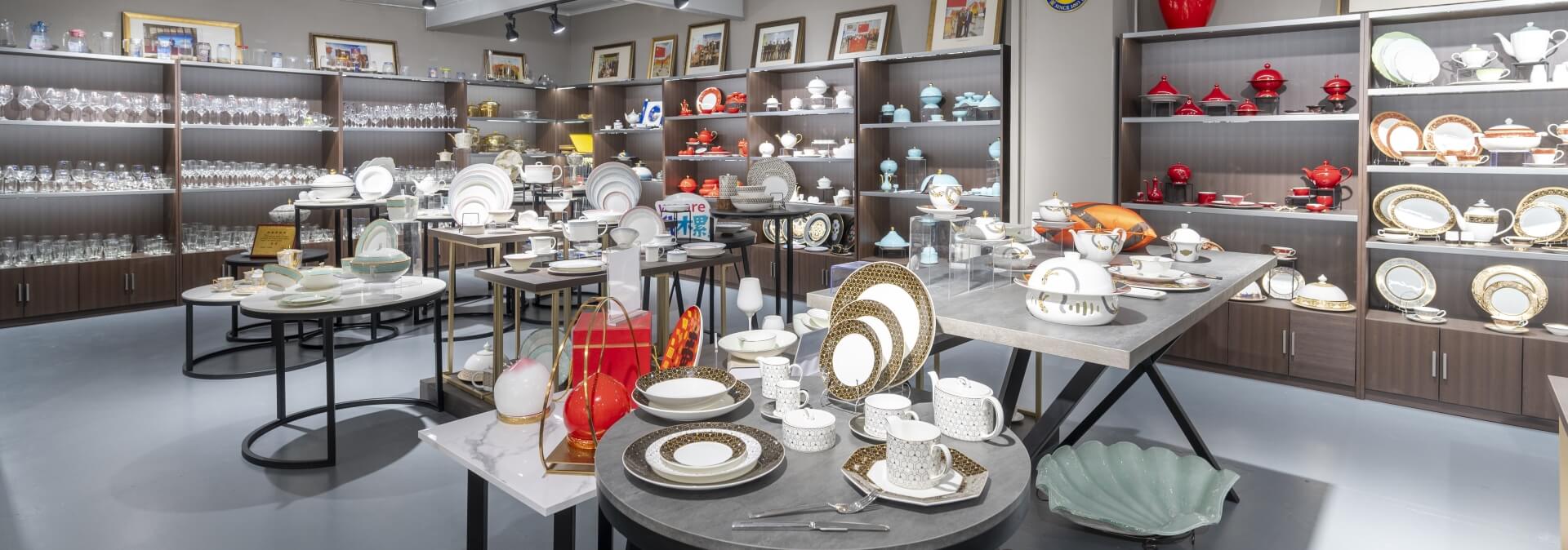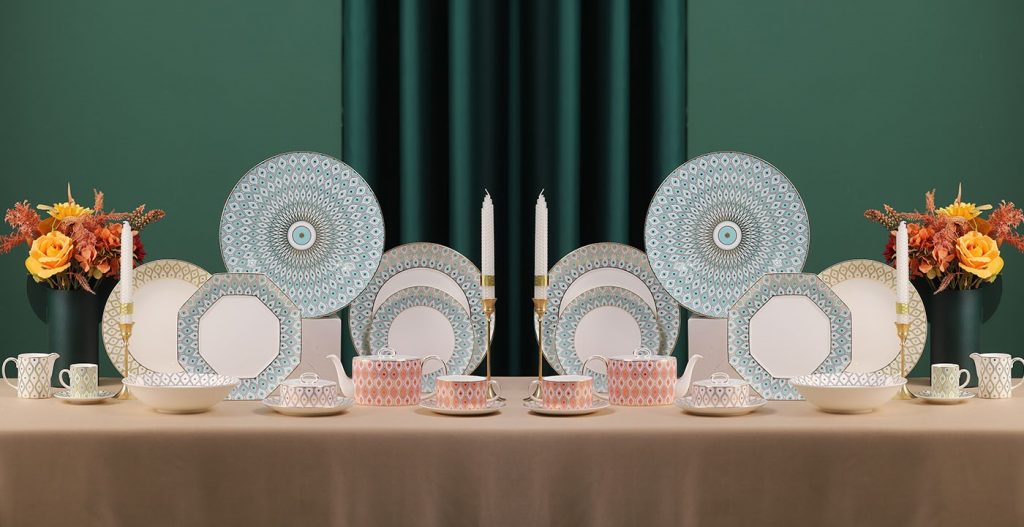
PITO Article
Bone China vs Porcelain: A Detailed Comparison of Durability and Elegance
Bone China vs Porcelain: What are the Differences?
One material that is frequently similar to another in luxury tableware manufacture is bone china vs porcelain. Both are in demand due to the appearance they possess, hardness, and sophistication. In this article, we will overview the major distinctions, advantages, and applications of bone china and porcelain, so you can learn what set to choose. Whether you are in the market for a beautiful tea set or a strong and long-lasting dinner set, you will find all the information here.
What is Bone China?
Bone china is a ceramic product which processes materials including bone ash, kaolin, and feldspar. Its distinctive component is a dissolved bone ash, which is derived from cow bones, and makes the piece delicate, semi-transparent, and light. This kind of china is not as strong as porcelain with a lower firing temperature but it is so elegant for use on special occasions in dining and tea sets.
Bone china has a beautiful appearance, it is very frail and at the same time possesses tremendous strength; it is used extensively for preparing tableware articles of superior quality. But its minimal transparency also contributes to its beauty especially when there is natural light in the dining area or in tea ceremonies.
Bone China: A Closer Look to Some of the Most Important Characteristics
Lighter and Brighter:
Bone china is lighter, thinner and more delicate than regular porcelain and is very translucent. They also ensure that the roof is lighter than the previous one to give the house a brighter interior colour. The whiteness of the material is extremely high and its transparency also contributes to the beautiful outlook adding a touch of luxury.
Smooth and Durable:
It also has a very smooth surface when touched perhaps giving it the best surface finish. Contrary to its brittle appearance, bone china is relatively strong, and not easily breakable at all. In fact, it is 40 per cent stronger than the standard porcelain look and feel. This increased strength enables bone china items to be more durable and they are able to handle day-to-day use.
Thinner but Stronger:
As compared to other porcelain items of the same volume, bone china is extremely lightweight as caused by the thickness layer. But do not be misled by the slim height of the plate, bone china also has high impact strength and shows higher chip resistance thus making it have a longer life.
Bone china has very poor water absorbability which makes it easy to clean, and is non-stainable. This feature makes it even more attractive and useful throughout every day of the week and any kind of event.
Rigorous Quality Control:
Bone china coy is stringently produced from 28 stages of production and passes through 6 QC checks to qualify each piece.

What is Porcelain?
Porcelain is another kind of fine ceramic, which has long been used to produce strong and beautiful objects for the dinner table. However, porcelain does not have bone ash incorporated within its material like what is inherent in producing bone china. It is, however, a mixture of kaolin, feldspar, and quartz. It is hard and strong but somewhat more rigid than bone china and definitely less porous; it is fired at a higher temperature.
Porcelain: Outstanding Strength and Timeless Class
Smooth and Delicate Surface:
Porcelain is very popular due to its fine and uniform appearance, meaning it looks very nice and can be very functional as well. A silky touch is tight due to its fine ceramic structure that has been processed to meet the highest finishes. Besides, it does not accumulate dirt, has low water absorption and therefore remains suitable for daily use. Spills and spills can no longer easily seep into the surface to result in constantly clean porcelain pieces.
High-Temperature Sintering:
The porcelain referred to as ‘’Royal White’, or European White is a pure white colour that signifies the quality of the product. This white finish is done in a professional and highly sintered finish brought by the high-temperature Sintering Technology which makes porcelain both durable and stylish. This is because it has a modern cut and design that befits the cutting-edge table settings as well as the traditional settings.
High Strength and Non-Slip Base:
The porcelain body is developed to be strong and the material is good for high traffic since it can easily withstand the pressure. They are characterized by a non-slip bottom which serves as an additional convenience; the coaster stays perfectly stable on any kind of flat surface. Porcelain has features like strength and beauty that make it suitable for use when serving formal meals as well as other regular meals.
Elegant Patterns and Long-Lasting Colors:
Porcelain has a number of potential fancy patterns; typically, the use of decals applied in the second firing is allowed. This firing process makes the colours and patterns long-lasting for instance will give your dinnerware an appealing charm for many decades. The extra vigour of porcelain guarantees that it stays stunning even after long periods of utilization; this classification is ideal for glamour lovers.
Bone China vs Porcelain: Key Differences
Now that we’ve outlined the features of both materials, let’s dive deeper into the differences between bone china vs porcelain:
Composition
• Bone China: They include bone ash, kaolin, and feldspar.
• Porcelain: foundry clay which is composed of kaolin, feldspar and quartz but does not contain bone ash.
Translucency
• Bone China: On this one, its main characteristic is the translucence. It is sometimes possible to observe the passage of light through objects made of such material.
• Porcelain: Less clear and less transparent than clear and fully clear types containing less of both types of crystalline structures.
Weight
• Bone China: Thin tendons that make it somewhat more fragile and suited for festive meals or, if you will, properly posh feasting.
• Porcelain: Slightly heavier than the standard rollerball but more solid and perfect for regular writing.
Durability
• Bone China: While more durable, there is a tendency of the bone china to chip slightly more than porcelain.
• Porcelain: Unlike earthenware, porcelain requires high-temperature firing making it very hard and ideal for cutleries that can be used daily.
Aesthetic Appeal
• Bone China: Ideal for those people who are seeking a luxury tableware set. The ability to let in a pinch of light when fully closed also gives the blinds a little touch of sophistication when used in formal houses.
• Porcelain: Gives off the standard fashion in terms of design and is more straightforward, suitable for everyday use but can be used in the formal setting.
Porcelain for Special Functions
For a fancy dinner or procuring the finest tea set, bone china is the thing you’d want to get your hands on. These are the kinds of events for which it is light and has that rather transparent gorgeousness to it. Moreover, due to its fine textural feel and lightness of weight bone china strikes a unique tonal and endurance note. On any special occasion like a wedding, anniversary, or even holiday, serving food on bone china makes a big difference.
Tea Sets and Bone China
To the people of tea-drinking countries, tea has a history that is unparalleled, and no other material goes well with the tea ceremony than bone china. Bone china‘s translucency further underlines the gentility of food presentation and accompanies a tea party with a flair.
Conclusion:
Both bone china vs porcelain have their own unique features and benefits. Bone china excels in elegance, lightweight feel, and translucency, making it ideal for special occasions and formal dining. Whether you’re investing in a luxury tea set or durable dinnerware, both materials offer beauty, durability, and function. For more information on purchasing bone china or porcelain, visit P&T ROYAL WARE.
LET'S TALK TOGETHER
Lorem ipsum dolor sit amet, consectetur estor adipi isicing elit, sed do eiusmod tempor este uterre incididui unt ut

